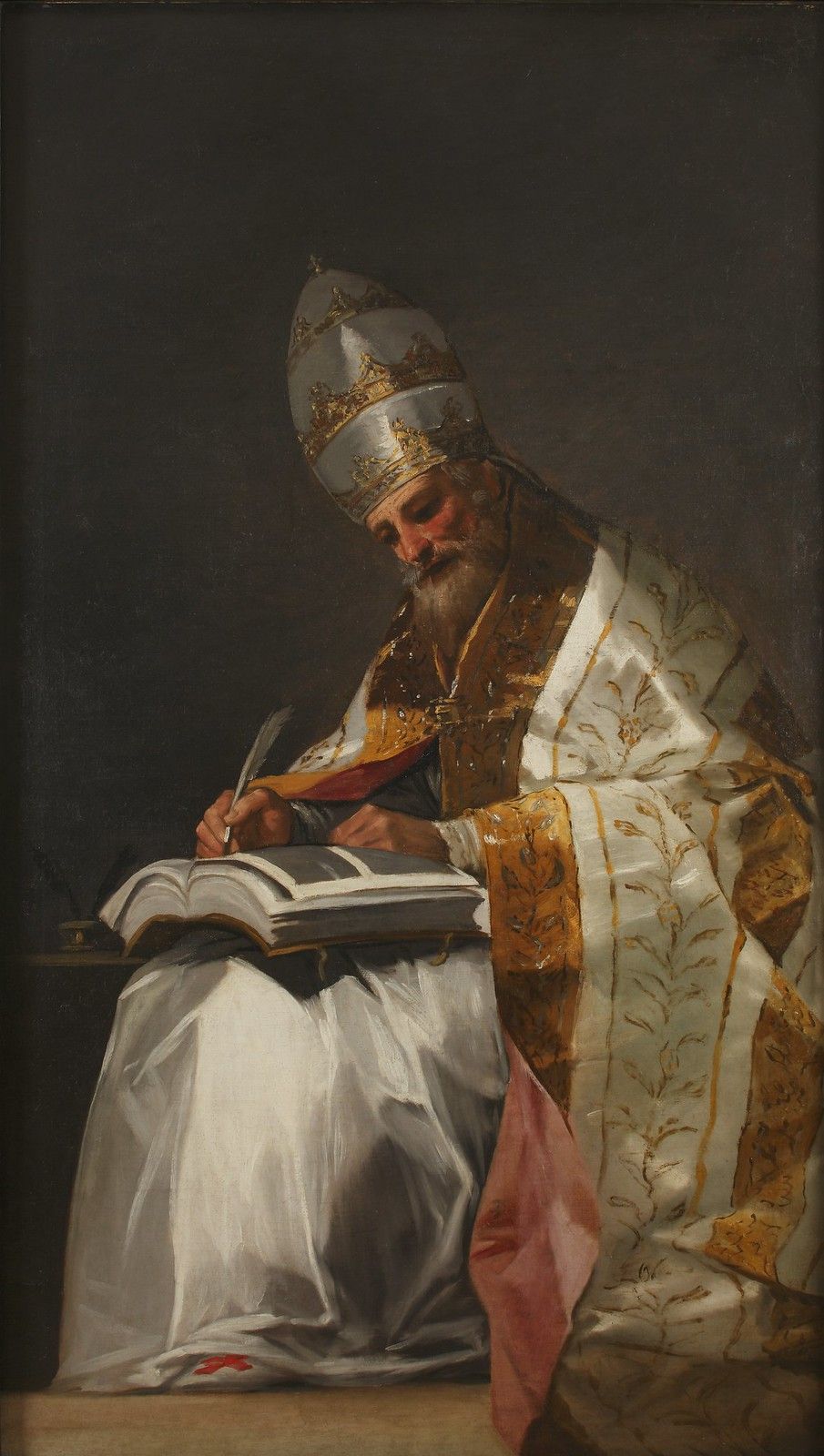The wisdom of the Saints transcends time and place, as we see in the lives of St. Gregory the Great and St. Elizabeth Ann Seton. Separated by 1,200 years, each Saint lived in tumultuous times, balancing action and contemplation in ways that are relevant in any age.
St. Gregory the Great, whose feast day is September 3, was pope from 590 to 604. Although he lived 1,400 years ago, he witnessed to how the Gospel can be lived in its purity, in any time.
We can see his spirituality embodied in the life of St. Elizabeth Ann Seton. In fact, when we look closely, it’s clear that the life and wisdom of both St. Gregory and Mother Seton share much in common, and are relevant to Christians of every age. Here are 5 ways that’s true:
Pope Gregory’s love of Scripture.
Even the Protestant reformer John Calvin, a great opponent of the Catholic clergy, called Gregory the “last good pope.”
What made him appealing to Calvin? Pope Gregory loved the Scriptures — and lived them.
St. Elizabeth Ann Seton, of course, was a devout Episcopalian before she became a Catholic. It was as a Protestant that she first discovered the freshness and power of the Gospel.
“The sacred Scriptures grow with the one who reads them,” Gregory said. They certainly grew with Pope Gregory. He followed them to the letter, sending priests out to feed the hungry, waiting to eat until they returned, himself dining with a dozen poor people at his own meals.
Pope Gregory prescribed being detached from the world.
In his seminal work The Love of Learning and the Desire for God, historian Jean Leclercq said that according to St. Gregory the Great, “The Christian life is conceived as, above all, a life of detachment and desire: detachment from the world and from sin, and an intense desire for God.”
Gregory’s description of the Christian life doubles as a description of Elizabeth Ann Seton’s life, even before she entered religious life.
Elizabeth once wrote to a friend that she had come to understand Providence better “this morning at communion, submitting all my desires and actions in entire abandonment to His will.”
She didn’t wait for her formal vows to try to let go of worldly pursuits in the manner of religious life. Even before becoming a sister, she said “I have long since made the Vows which as a religious I could only renew, and the thirst and longing of my soul is fixed on the cross alone … entirely detached from the world.”
St. Elizabeth Ann Seton lived her life as a married woman in the manner St. Gregory instructs.
St. Gregory taught married couples: “The married should not… worry themselves so much about what they must endure from their spouse but consider what their spouse must endure on account of them. For if one really considers what must be endured on his account, it is all the easier to bear the things of others.”
St. Elizabeth Ann gave exactly the same advice to a friend who had married, telling her that her job as a wife was “studying the happiness of your husband, as you wish him to study yours, and as a true Christian setting him the first example of a humble heart.”
Elizabeth’s willingness to put the needs of her husband, William, ahead of hers, was clear during the time he fell ill. Her actions speak loudly, as she took on the burdens of her husband’s work, then arranged a voyage to Italy for them, in hopes of a cure.
But her words about him speak loudly, too. She describes how, near the end of his life, “My husband looked in silent agony at me and I at him, each fearing to weaken the other’s strength. At the moment he drew himself towards me and said ‘I breathe out my Soul to you…’”
This mutual servant-love of husband and wife prepared St. Elizabeth Ann to be a servant leader later, like St. Gregory.
St. Gregory the Great was the first to call himself a “servant of the Lord,” and to use the papal title still used today, “servant of the servants of God.”
“No one does more harm in the Church than he who has the title or rank of holiness and acts perversely,” was a central tenet in his Book of Pastoral Rule.
Gregory showed this in his personal demeanor. St. John Moschos, a sixth century abbot, wrote that he once prostrated himself as Pope Gregory passed by him in Rome. But then, he wrote, St. Gregory “prostrated himself down to the ground and refused to rise until I had got up.” Once they both got up, Gregory gave a contribution to his Abbey.
St. Elizabeth Ann signed her letters “Your humble servant Elizabeth Ann Seton” and a favorite quote of hers sums up her leadership style — and her life: “The gate of heaven is very low; only the humble can enter it.”
Finally, St. Elizabeth Ann was a beautiful example of St. Gregory’s much-repeated advice to teachers.
St. Gregory is famous for an aphorism that speaks a key truth to educators: “We make Idols of our concepts, but Wisdom is born of wonder.”
Mother Seton shared her age’s disciplined approached to education, but she never lost her sense of wonder. In one letter, she spoke of her young daughter Rebecca in this way:
“If you could see her on her knees milking her little white cow and afterwards loaded with a little tin pail in each hand running over and her eyes glistening with the delight of the wonders she can do.”
She saw the rustic setting of her residence as a kind of teacher in itself, praising “the beauty of its shades in the setting sun, the waving of the wheat fields, our woods covered with flowers, and the quiet contented look of our habitation and its inhabitants.”
St. Gregory, pray that the Church today can experience the devotion to Scripture, married love, servant leadership, and delight in nature that made you great. St. Elizabeth Ann, pray that we can do in our time what you did in yours!
TOM HOOPES, author most recently of The Rosary of Saint John Paul II, is writer in residence at Benedictine College in Kansas, where he teaches. A former reporter in the Washington, D.C., area, he served as press secretary for the U.S. House Ways & Means Committee Chairman and spent 10 years as editor of the National Catholic Register newspaper and Faith & Family magazine. His work frequently appears in the Register, Aleteia, and Catholic Digest. He lives in Atchison, Kansas, with his wife, April, and has nine children.
Source: https://setonshrine.org/






0 Comments